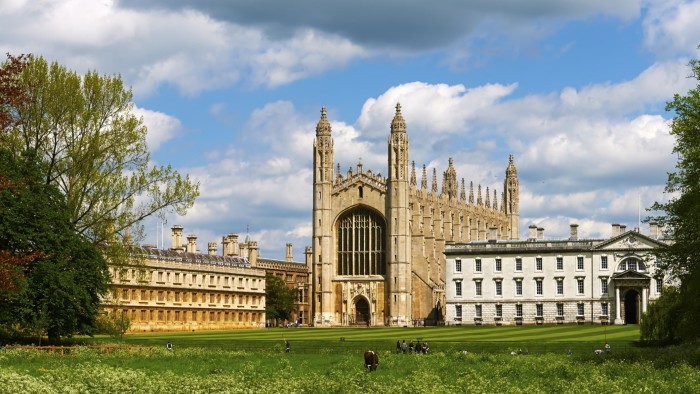Unlock the Editor’s Digest for free
Roula Khalaf, Editor of the FT, selects her favourite stories in this weekly newsletter.
The writer is pro-vice-chancellor for innovation at the University of Cambridge
The Oxford-Cambridge Arc growth corridor, which will unlock over £78bn for the UK economy by 2035, is becoming something of an anchor project for this growth-focused government. While the ambitions are very encouraging, the real challenge lies in translating fine words into delivery.
Chancellor Rachel Reeves is right to highlight Cambridge as the science superpower of Europe and to single out how it has the potential to lead the growth charge. However, the government needs to do more if this advantage is to be turned into tangible results.
The truth is that while the opportunity is vast, so too is the global competition. A recent trip to the campuses of Harvard, MIT and the innovation district of Kendall Square in the other Cambridge — in Massachusetts — underlined for me what Britain needs to do if it is not to be left behind in the international innovation race.
Over the past decade, Cambridge MA has put in place innovation hubs which have transformed the city’s capability to start and grow new businesses. This didn’t happen by accident. Strategic investments in infrastructure have created an ecosystem where academia translates rapidly into high-growth start-ups. The hubs then help find space to scale up from sites all over the country and have benefits beyond their immediate region.
The Engine at MIT, for example, offers 200,000 square feet of lab space, almost $1bn of investment capital, and targeted support to help “tough technology” start-ups scale. Greentown Labs and LabCentral are similar hubs, bringing together start-ups, investors, corporate partners, and talent in one high-density space.
LabCentral alone secured a remarkable 21 per cent of the total Series A funding in US biopharma last year. No UK university or accelerator currently offers this level of integration or scale.
Competition is global. The US, with its aggressive funding and risk-tolerant venture investors, has set the standard but others are following suit. France’s Station F, attracting $1bn in VC investment annually, shows the model can work in Europe too.
The lessons from other global cities are self-evident: deliberate action fuels success. Also self-evident is the role of world class universities. In Massachusetts, Harvard and MIT universities provide the talent, the research engine and the long-term mission of the district.
Frequent convening of entrepreneurs, accelerators and talent is also vital. So is physical co-location of research, capital and industry.
Boston’s transformation was made possible with more than $1.6bn in state government investment over 15 years with the goal to make it the number one life sciences ecosystem in the world. While we might not be able to match investment at that scale, the UK must make a clear, sustained commitment to innovation infrastructure to compete.
Cambridge has all the ingredients to lead: the world’s highest concentration of patents and academic entrepreneurs per capita, and an unparalleled record in converting innovation into economic growth. It is also organised and ready to move at pace. What’s missing is a central hub that will connect and scale our innovation ecosystem.
The recent announcement by Reeves backing the Oxford-Cambridge Arc corridor and an innovation hub in Cambridge could be a game-changer, if it is backed up with the type of funding and long-term alignment of government, industry and universities I saw in Boston. The UK’s public finances may be under pressure, but the returns on targeted investment in innovation far outweigh the costs.
This is not just about infrastructure, it’s about ensuring the UK remains a competitive force in the global economy. If we fail to act, we risk being left behind.
